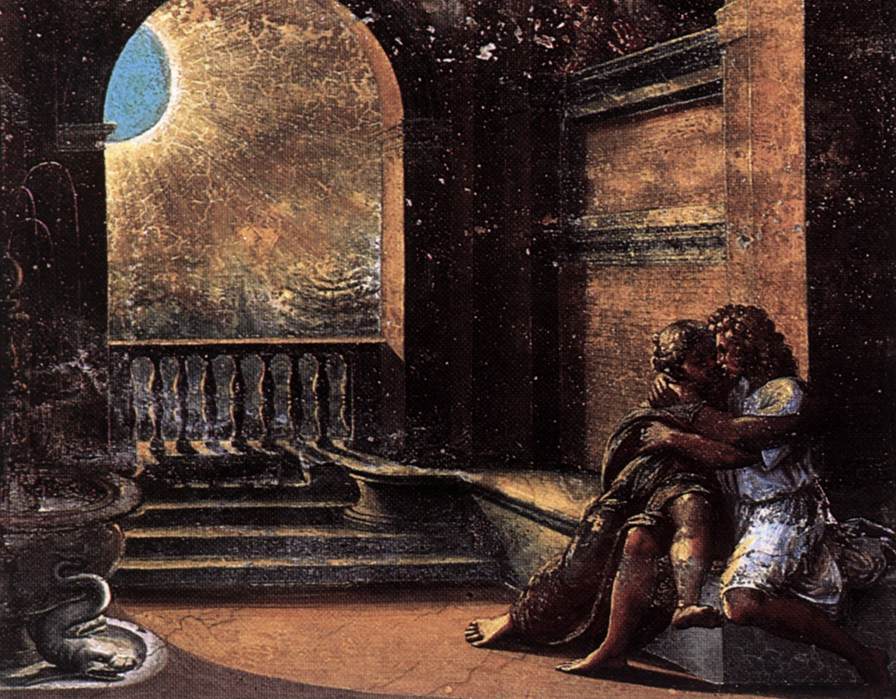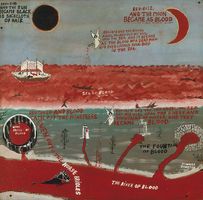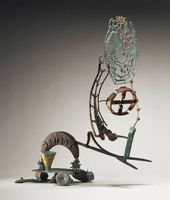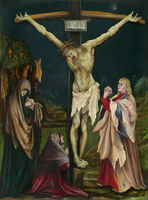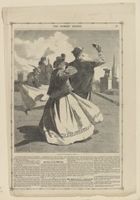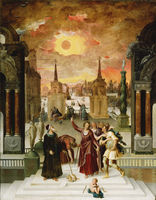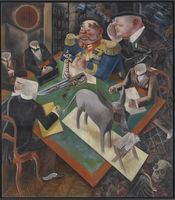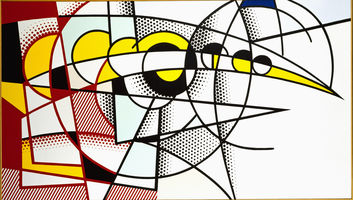Isaac and Rebecca Spied upon by Abimelech
Raphael and his workshop, Italian, 1483–1520
Isaac and Rebecca Spied upon by Abimelech, 1518–19
Fresco
Loggia, Vatican Palace
With the dawn of a more naturalistic aesthetic during the Renaissance, progressive artists occasionally substituted cutting-edge observations of awesome astronomical phenomena for traditional iconographic motifs. For example, Giotto replaced the stylized Star of Bethlehem—in his scene of the Adoration of the Magi in the Scrovegni Chapel, Padua—with a portrayal of Halley’s Comet, which he and the viewers of his fresco had witnessed in 1301. Two centuries later, Raphael depicted several spectacular celestial phenomena in paintings that lend them great immediacy.
Raphael (and members of his workshop) frescoed a revolutionary illustration of a solar eclipse featuring the dark lunar disk ringed by the corona—the aura of plasma that appears like a glowing halo around the silhouette of the moon during a total eclipse—in the scene of Isaac and Rebecca Spied on by Abimelech, in which coronal streamers shooting out from active regions of the sun appear as spiky rays. This scene depicts an innovative interpretation of Genesis 26:8, wherein Isaac—who called his wife, Rebecca, his sister because he was afraid of being killed on account of her beauty—amorously embraces Rebecca while Abimelech, king of the Philistines, spies on the couple from his window. Raphael used the vivid solar eclipse as a complex metaphor for their stealthy deception and lovemaking, which here occurs during the darkness of totality. Although the artist based his depiction on an annular eclipse that he had observed on June 8, 1518 (see http://eclipse.gsfc.nasa.gov/SEatlas/SEatlas2/SEatlas1501.GIF), he “corrected” it to capture the totality of a total solar eclipse. This artistic license suggests that the artist was in touch with learned scientists in the papal circle. Raphael completed the commission that includes this painting—consisting of fifty -two scenes from the Old and New Testaments and often called “Raphael’s Bible”—for Pope Leo X in 1519, the year Martin Luther formally initiated the Reformation.
Roberta J. M. Olson, Curator of Drawings at the New-York Historical Society

Note that the star of Bethlehem is actually Halley’s Comet.
